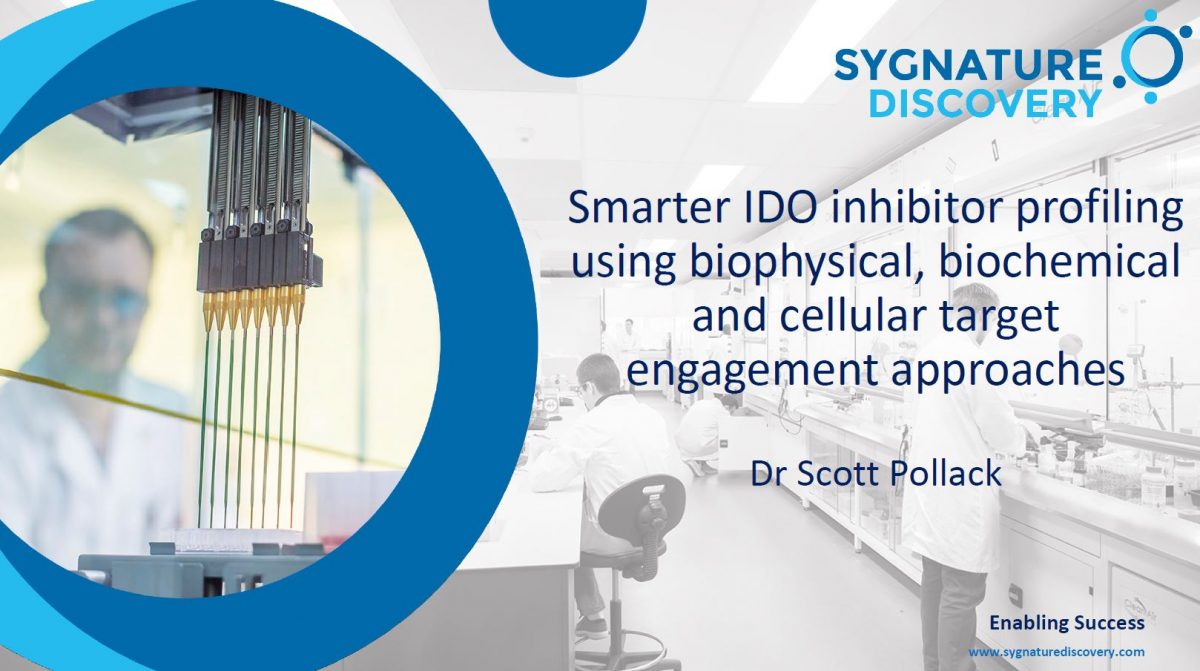Smarter IDO inhibitor profiling using biophysical, biochemical and cellular target engagement approaches
Abstract
In small molecule drug discovery for intracellular enzyme inhibitors, it is essential to have an efficient and informative hit profiling strategy in place that ideally measures target engagement in situ.
Using inhibitors of the immuno-oncology target indoleamine 2,3-dioxygenase 1 (IDO1) as an illustrative example, we have utilised biophysical, biochemical and cellular approaches to demonstrate a robust paradigm for characterising hit compounds. In particular, a product detection-based readout was used to assess IDO1 activity from purified protein and cellular sources. Thermal shift was used as an orthogonal biophysical approach to IDO1 activity and cellular thermal shift assay (CETSA) was used to assess intracellular target engagement. An inhibitor of the related enzyme, tryptophan 2,3-dioxygenase 2 (TDO), was used as a specificity control.
The results of this multifaceted approach showed qualitative agreement between techniques. As expected, there were specific differences in inhibitor potency across assays, for example, with enzyme vs. cellular IDO1 activity, along with some unexpected findings with the TDO inhibitor, indicating that no single technique is sufficient to fully interpret the relationship between enzyme and cellular IDO pharmacology.
In conclusion, the results suggest that a strong correlation between intracellular target engagement and cell efficacy strengthens the hit identification process for future hit-to-lead drug discovery projects.

